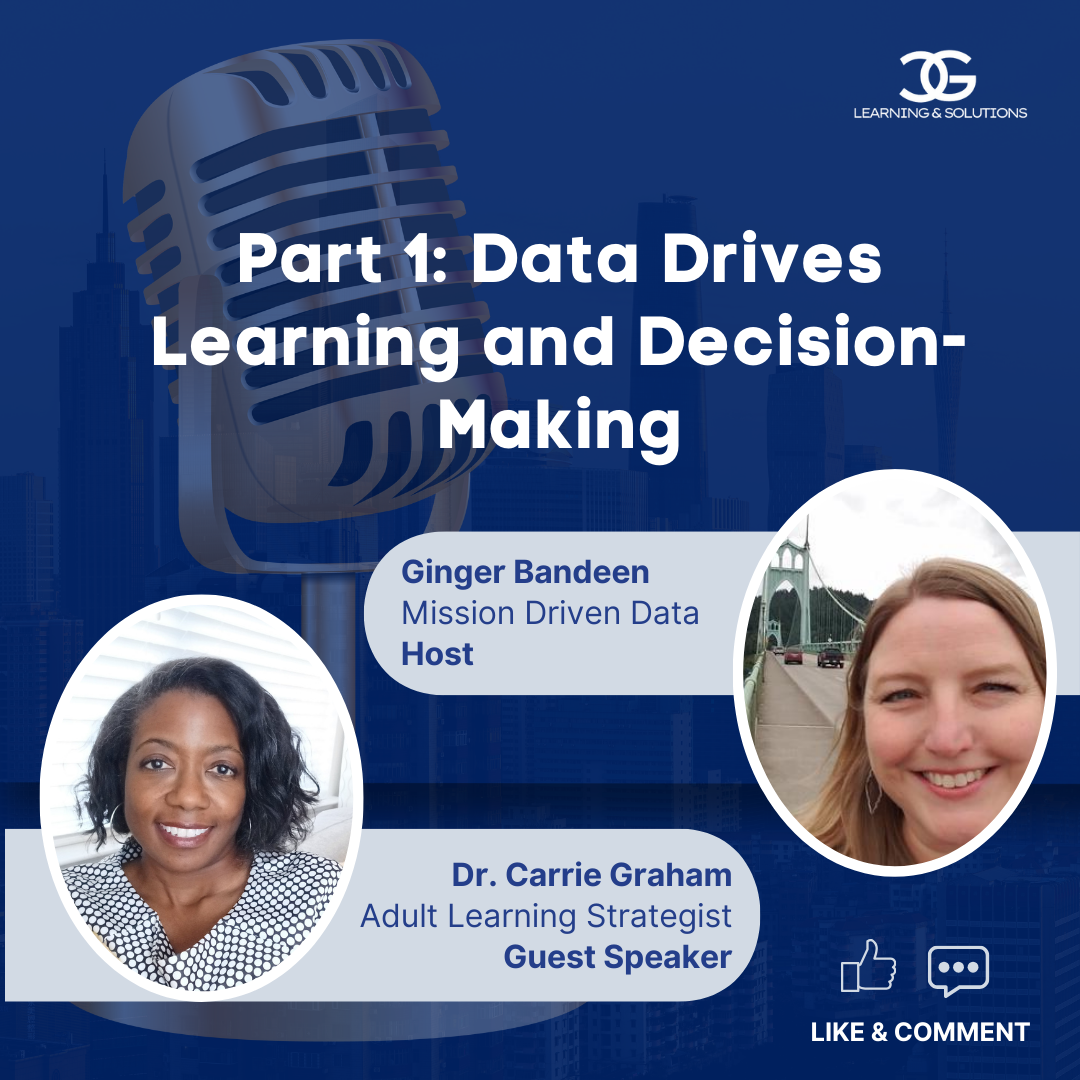Episode Overview
This episode explores the intersection of data communication and adult learning principles, focusing on how organizations can design more effective training and development programs. The discussion emphasizes that data professionals are essentially educators who need to understand how adults learn to make their information meaningful and actionable.
Listen Here > https://www.dropbox.com/scl/fi/o5j8jhtxau6bi9nv0vthy/April-Guest-Speaker-Dr.-Carrie-Graham.mov?rlkey=xahh8pqdcatj7m44hdbr0hkxy&st=ehgg76kh&dl=0
10 Key Points
- Adult Learning Is Different from Child Learning: Adults bring wealth of life experiences, have evolving social roles, and need to understand the "why" behind information before they can effectively apply it.
- Training Gaps Are Multi-Dimensional: When training fails, the problem could be in the data/information presentation, the learner's capacity or prior knowledge, or the facilitator's understanding of learner needs.
- Life Experience Creates Learning Context: Adults need to connect new information to existing knowledge. Without relevant experience, learning becomes much more difficult and requires additional foundational support.
- Social Roles Impact Learning Capacity: Working parents, caregivers, and people in transition have different availability and mental bandwidth that must be considered in professional development planning.
- Chunking Information Improves Retention: Breaking long training sessions into shorter, focused segments (10-minute videos vs. hour-long presentations) respects adult learners' time constraints and improves comprehension.
- Building Knowledge Requires Scaffolding: Effective training and development moves from foundational concepts to advanced applications, ensuring learners master basics before progressing to complex analysis.
- Peer Learning Amplifies Impact: Adults learn effectively from colleagues facing similar challenges. Creating opportunities for peer exchange enhances leadership qualities and builds internal expertise.
- Silence Is a Teaching Tool: Allowing processing time after presenting information helps adults integrate new concepts and formulate meaningful questions.
- Data Storytelling Requires Human Connection: Presenting numbers as representations of people rather than abstract figures helps bridge the gap between data analysis and human services work.
- Assessment Should Be Ongoing and Interactive: Checking understanding through specific questions, role-plays, and application exercises ensures training objectives are met.
10 Takeaways/Action Items
- Assess Your Audience First: Before designing any training or professional development plan, identify learners' prior experience, current roles, and capacity constraints to customize your approach.
- Break Down Complex Training: Replace lengthy training sessions with shorter, focused modules that employees can complete when their schedule allows, improving both engagement and retention.
- Build Learning Progressively: Structure your training and development programs to move from basic concepts to advanced applications, ensuring each level is mastered before progression.
- Incorporate Peer Learning: Create opportunities for employees to share experiences and solutions with colleagues, leveraging internal expertise to empower employees as teachers.
- Use Strategic Silence: Build pause time into presentations and training sessions, allowing participants to process information and develop questions before moving forward.
- Test Understanding Through Application: Rather than asking "Any questions?", pose specific scenarios and ask participants how they would apply the information in their work context.
- Humanize Your Data: When presenting data, use language that emphasizes the people behind the numbers ("30 people received services" vs. "30 services were provided").
- Create Data Champions: Identify employees who are successfully using data tools and invite them to co-present or share their application methods with colleagues.
- Make Training Searchable and Accessible: Provide transcripts, summaries, or other reference materials that allow learners to quickly find specific information when needed.
- Evaluate Training Effectiveness Through Behavior: Look for nonverbal cues during sessions and follow up to see if tools and information are being applied in daily work, adjusting your professional development plan based on actual usage patterns.
Leadership Development Implications
This episode highlights that effective data communication requires strong leadership skills, including the ability to understand diverse learning needs, facilitate meaningful discussions, and create environments where employees feel empowered to engage with complex information. Leaders who apply these adult learning principles in their training and development initiatives will see improved employee engagement, better data utilization, and more effective organizational decision-making.
Resources
